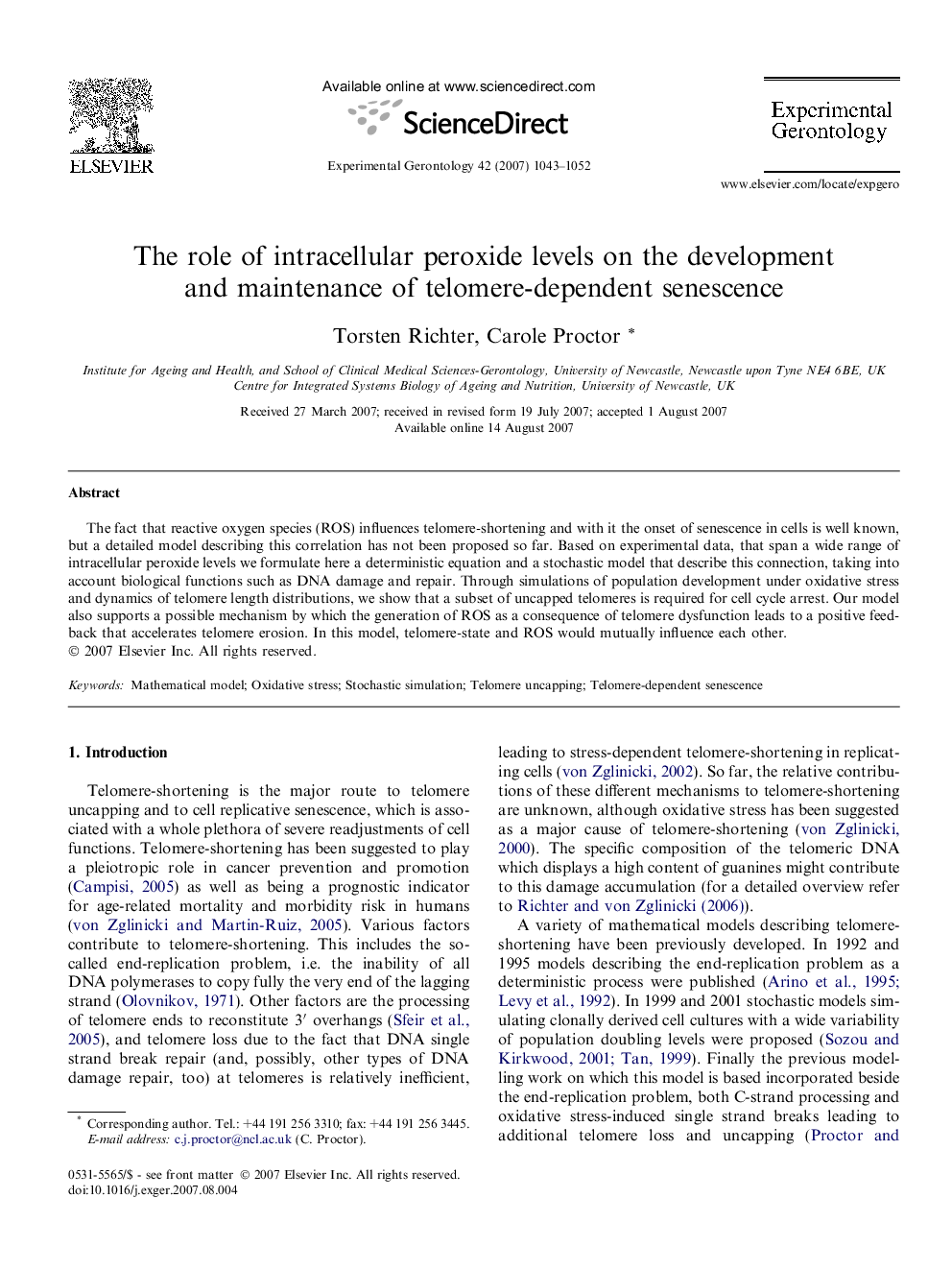| Article ID | Journal | Published Year | Pages | File Type |
|---|---|---|---|---|
| 1906868 | Experimental Gerontology | 2007 | 10 Pages |
The fact that reactive oxygen species (ROS) influences telomere-shortening and with it the onset of senescence in cells is well known, but a detailed model describing this correlation has not been proposed so far. Based on experimental data, that span a wide range of intracellular peroxide levels we formulate here a deterministic equation and a stochastic model that describe this connection, taking into account biological functions such as DNA damage and repair. Through simulations of population development under oxidative stress and dynamics of telomere length distributions, we show that a subset of uncapped telomeres is required for cell cycle arrest. Our model also supports a possible mechanism by which the generation of ROS as a consequence of telomere dysfunction leads to a positive feedback that accelerates telomere erosion. In this model, telomere-state and ROS would mutually influence each other.
